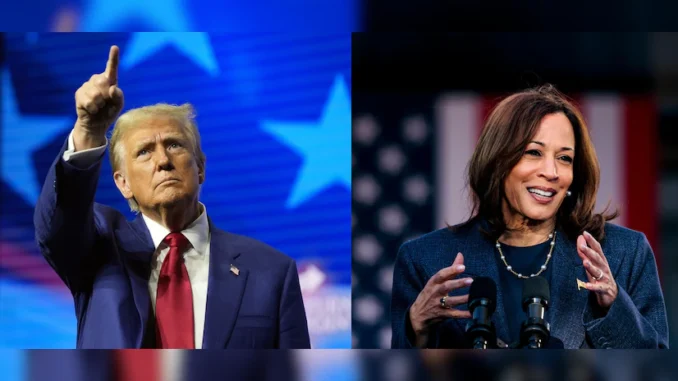
When will we know the result of the US presidential election?
)
Calling the Harris-Trump race could take days – here’s what to know about the presidential and congressional results
Over the last 25 years, Americans have regularly found themselves up into the early morning hours waiting for news organizations to make the decisive call of the last state needed to put a presidential candidate in the White House, and to learn who controls Congress.
A moment like this on election night in 2000 led to our common language of Republican states as red states and Democratic states as blue states, as the US watched the Meet the Press host Tim Russert on NBC talk late through the night about what was happening in Florida.
It’s extremely unlikely that we’ll know the winner of the presidential contest on election night, as Kamala Harris and Donald Trump are virtually tied in the polls, and the odds that the race comes down to a small number of swing states is high.
So when will we know who won the US election?
Well, that depends on how close things turn out to be. Four swing states – Arizona, Nevada, Pennsylvania and Wisconsin – have absentee ballot procedures that can require days to conclude. But if Harris has decisively won the other swing states, it is enough to declare her the victor. Any other result will take time.
Why do US news organizations make the call?
News organizations call a winner. They do not determine a winner. Officials in elections offices who count votes and certify election results determine the winner. That certification happens days or even weeks after an election.
News organizations convey the moment it has become plain from what those elections offices have said that the mathematical results of the vote count show a winner.
“Our standard is absolute certainty,” said David Scott, head of news strategy and operations at the Associated Press. “We don’t declare a winner until we are 100% confident that the trailing candidates can’t catch up.”
The Guardian follows the Associated Press in calling an election.
How do news organizations make their calls?
The AP and other election night news organizations such as CNN, NBC, ABC and Fox News maintain a “decision desk” and use a model to project how the vote count will unfold, state by state. Some are now relying on Decision Desk HQ, an independent organization set up specifically for this task.
“News organizations have gotten a lot more nervous about making early calls because they don’t want to have to take a call back like they did in 2000,” said Mike Wagner, a professor studying elections at the University of Wisconsin.
-
Don’t miss important US election coverage. Get our free app and sign up for election alerts
“It’s not Sean Hannity making that determination,” Wagner said. “It’s not Rupert Murdoch making that determination early. It’s the people in the room doing the analysis, making that determination about whether, whether the election can be called.”
The calls of different networks may differ in timing because each uses a model that is independent of others. Different analysts may make conclusions at different times.
When did we know the results in 2020?
Joe Biden was declared the winner on Saturday 7 November – four days after the election. The president crossed the electoral vote threshold that day when media outlets called Pennsylvania and Nevada. Michigan and Wisconsin were both called the day after the election, but Arizona wasn’t called until 12 November, North Carolina until 13 November, and Georgia on 19 November, after a recount.
That depends on the margins in each state. According to Protect Democracy, a non-partisan group, we’ll generally see results faster than in 2020 if the margin in a state is greater than 0.5%. They draw this conclusion because there will be significantly fewer mail ballots than in 2020, and states will be able to count them faster. Three states also expanded the pre-canvassing of mail ballots before election day that didn’t in 2020 (Arizona, Georgia and Michigan) and three states have an earlier deadline for when mail ballots must arrive than they did in 2020 (North Carolina, Nevada and Pennsylvania).
Be the first to comment